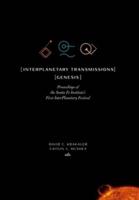Publisher's Synopsis
Launches of Delta, Atlas, and Titan rockets from Cape Canaveral Air Station (CCAS) have potential environmental effects that could arise from direct impacts of the launch exhaust (e.g., blast, heat), deposition of exhaust products of the solid rocket motors (hydrogen chloride, aluminum oxide), or other effects such as noise. Here we: 1) review previous reports, environmental assessments, and environmental impact statements for Delta, Atlas, and Titan vehicles and pad areas to clarity the magnitude of potential impacts; 2) summarize observed effects of 15 Delta, 22 Atlas, and 8 Titan launches; and 3) develop a spatial database of the distribution of effects from individual launches and cumulative effects of launches. The review of previous studies indicated that impacts from these launches can occur from the launch exhaust heat, deposition of exhaust products from the solid rocket motors, and noise. The principal effluents from solid rocket motors are hydrogen chloride (HCl), aluminum oxide (Al2O3), water (H2O), hydrogen (H2), carbon monoxide (CO), and carbon dioxide (CO2). The exhaust plume interacts with the launch complex structure and water deluge system to generate a launch cloud. Fall out or rain out of material from this cloud can produce localized effects from acid or particulate deposition. Delta, Atlas, and Titan launch vehicles differ in the number and size of solid rocket boosters and in the amount of deluge water used. All are smaller and use less water than the Space Shuttle. Acid deposition can cause damage to plants and animals exposed to it, acidify surface water and soil, and cause long-term changes to community composition and structure from repeated exposure. The magnitude of these effects depends on the intensity and frequency of acid deposition. Schmalzer, Paul A. and Boyle, Shannon R. and Hall, Patrice and Oddy, Donna M. and Hensley, Melissa A. and Stolen, Eric D. and Duncan, Brean W. Kennedy Space Center...












